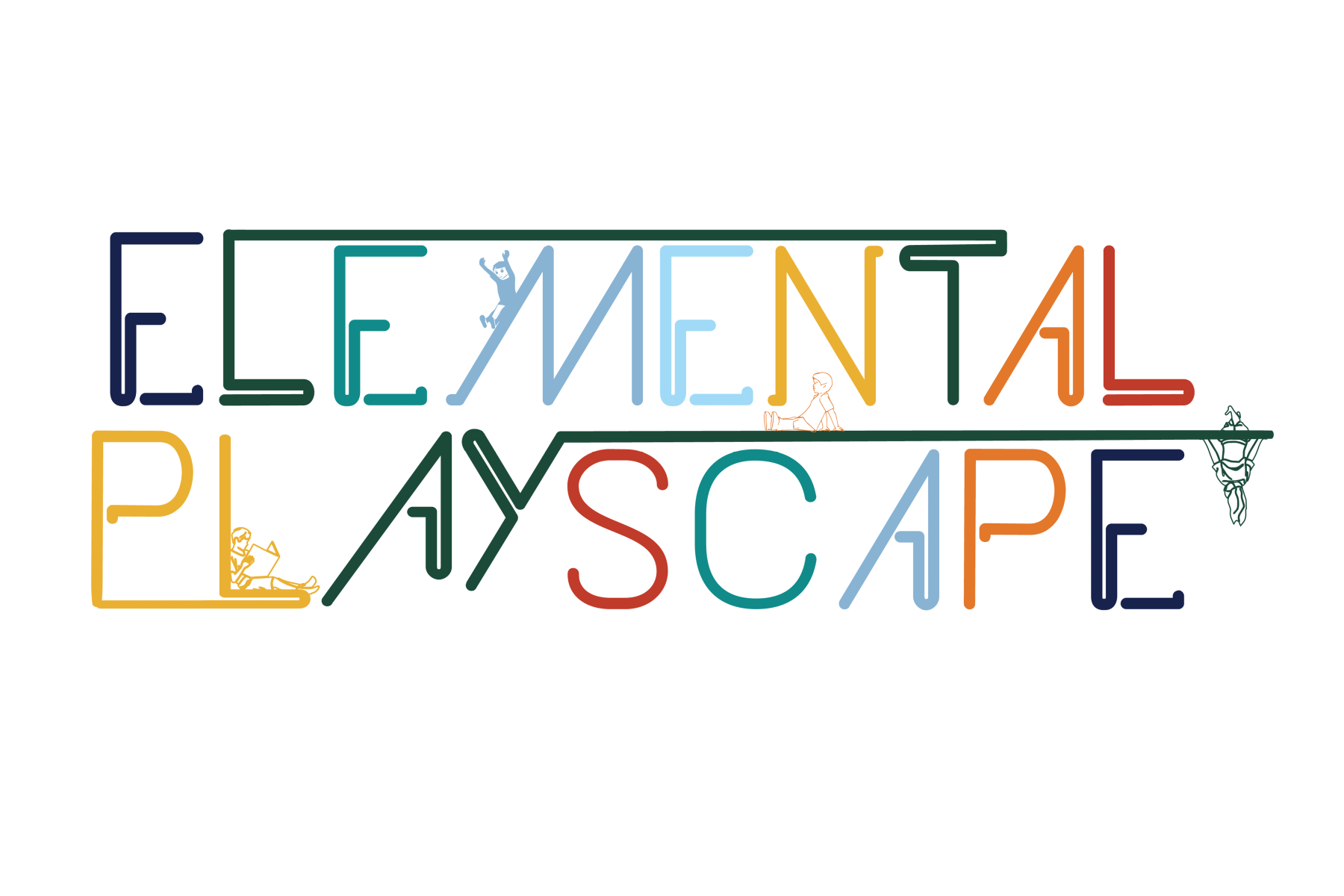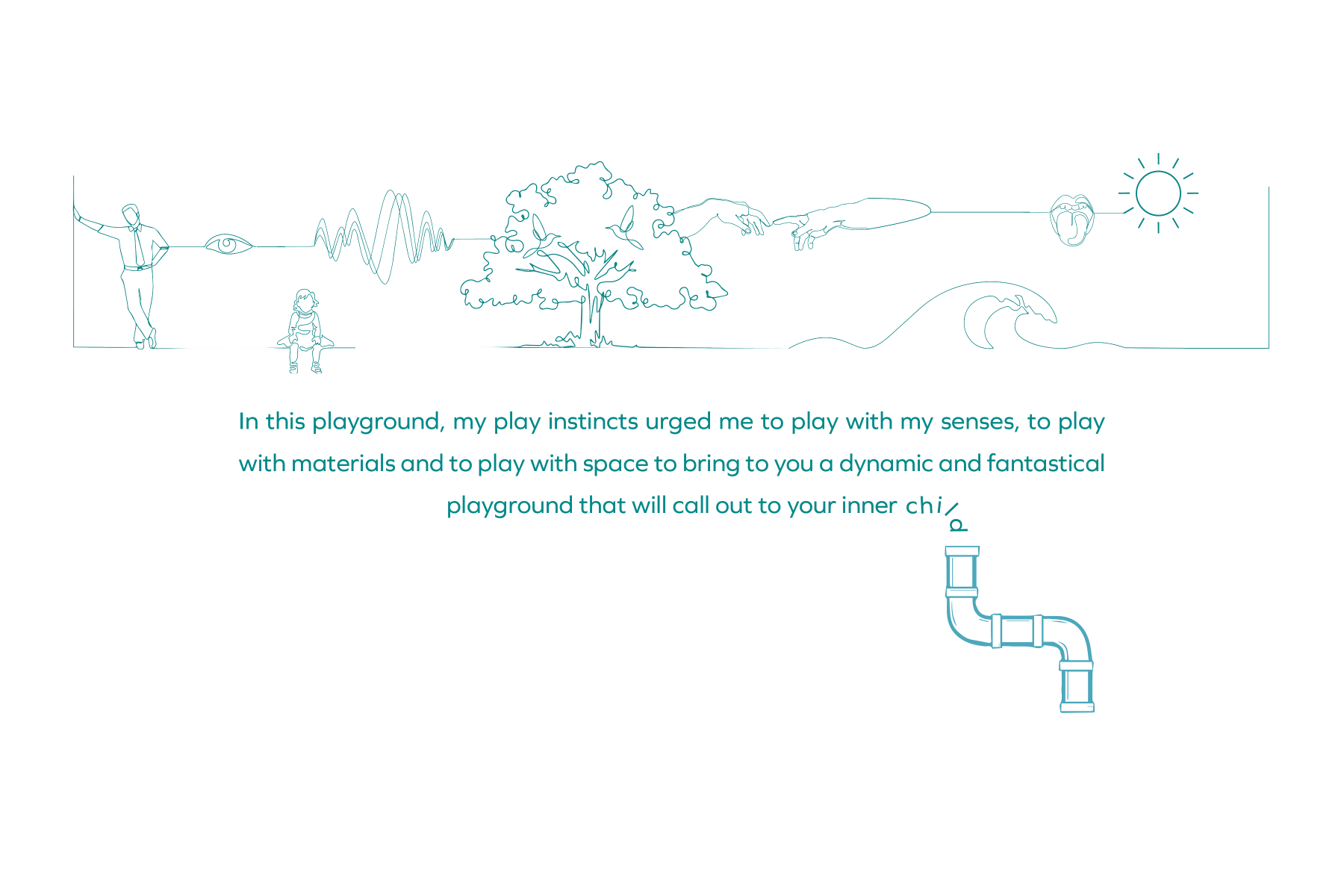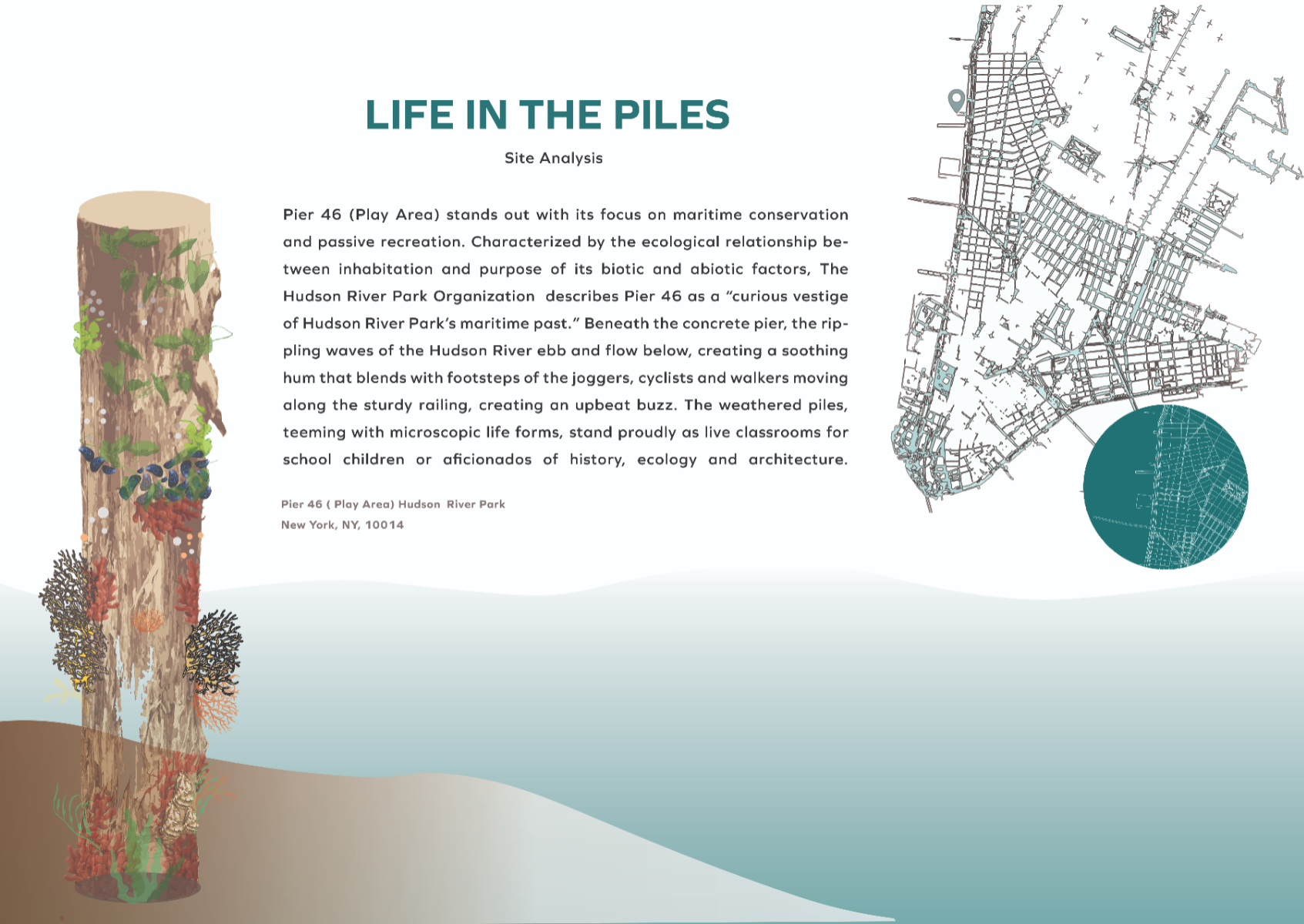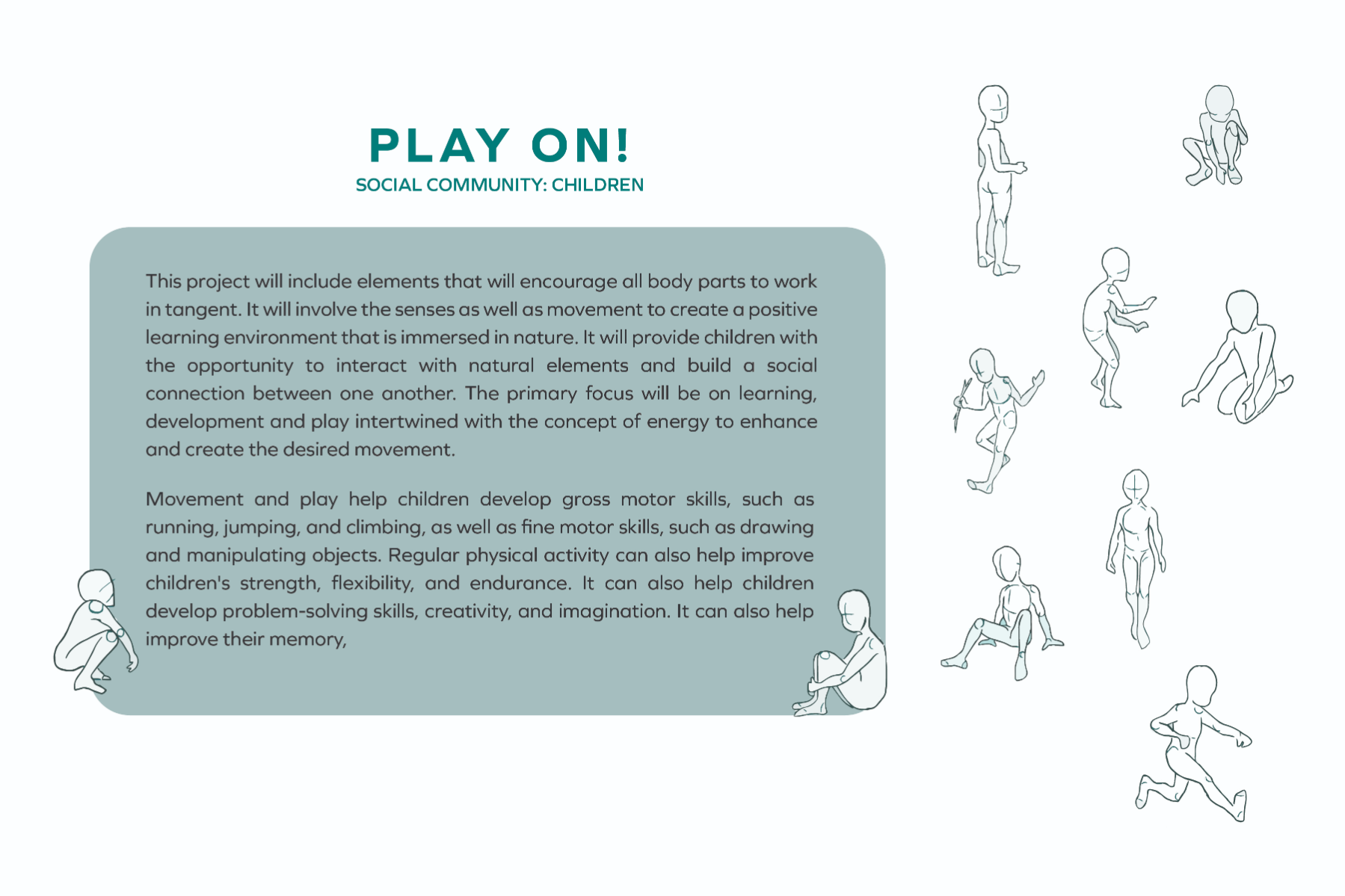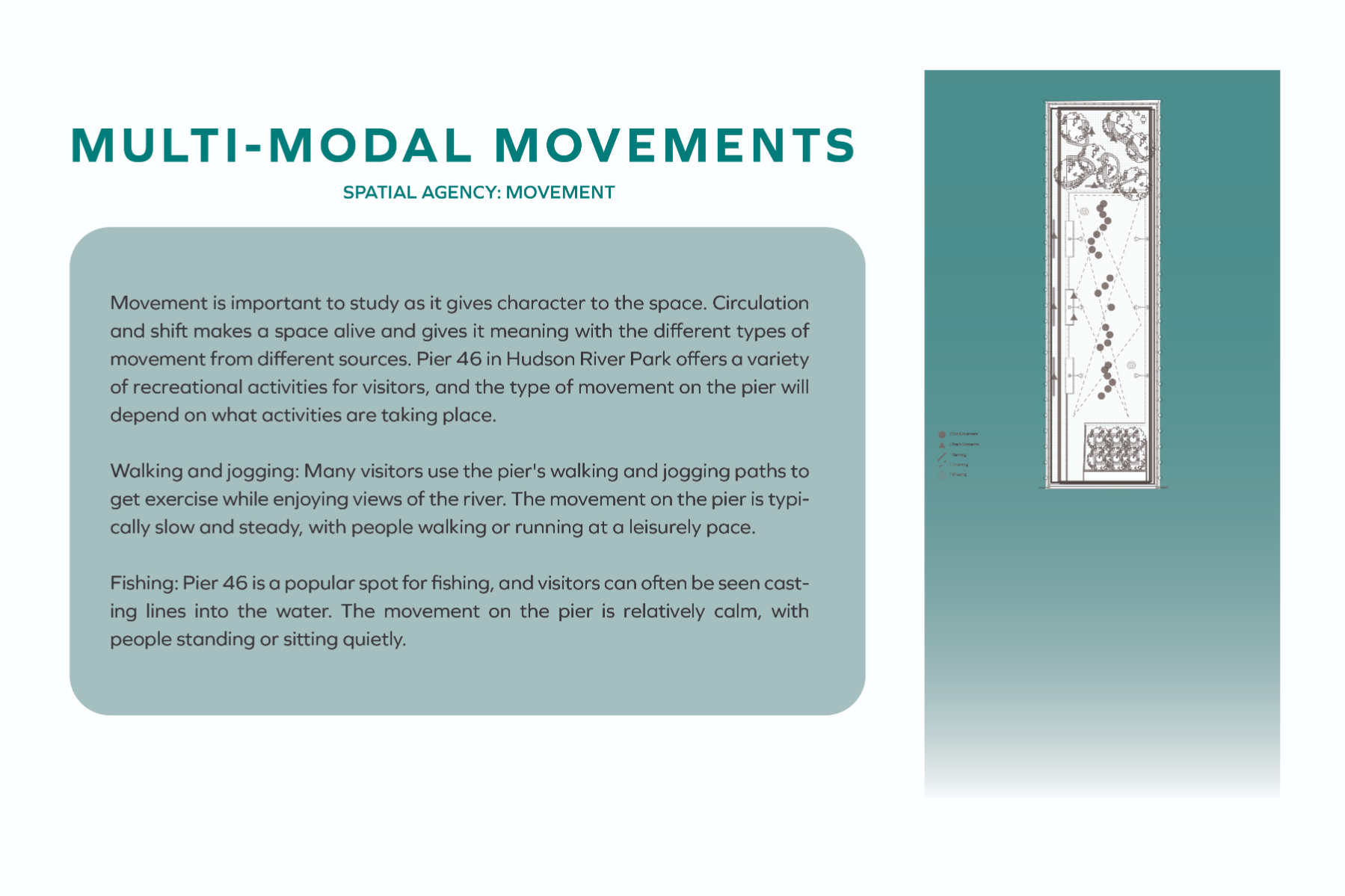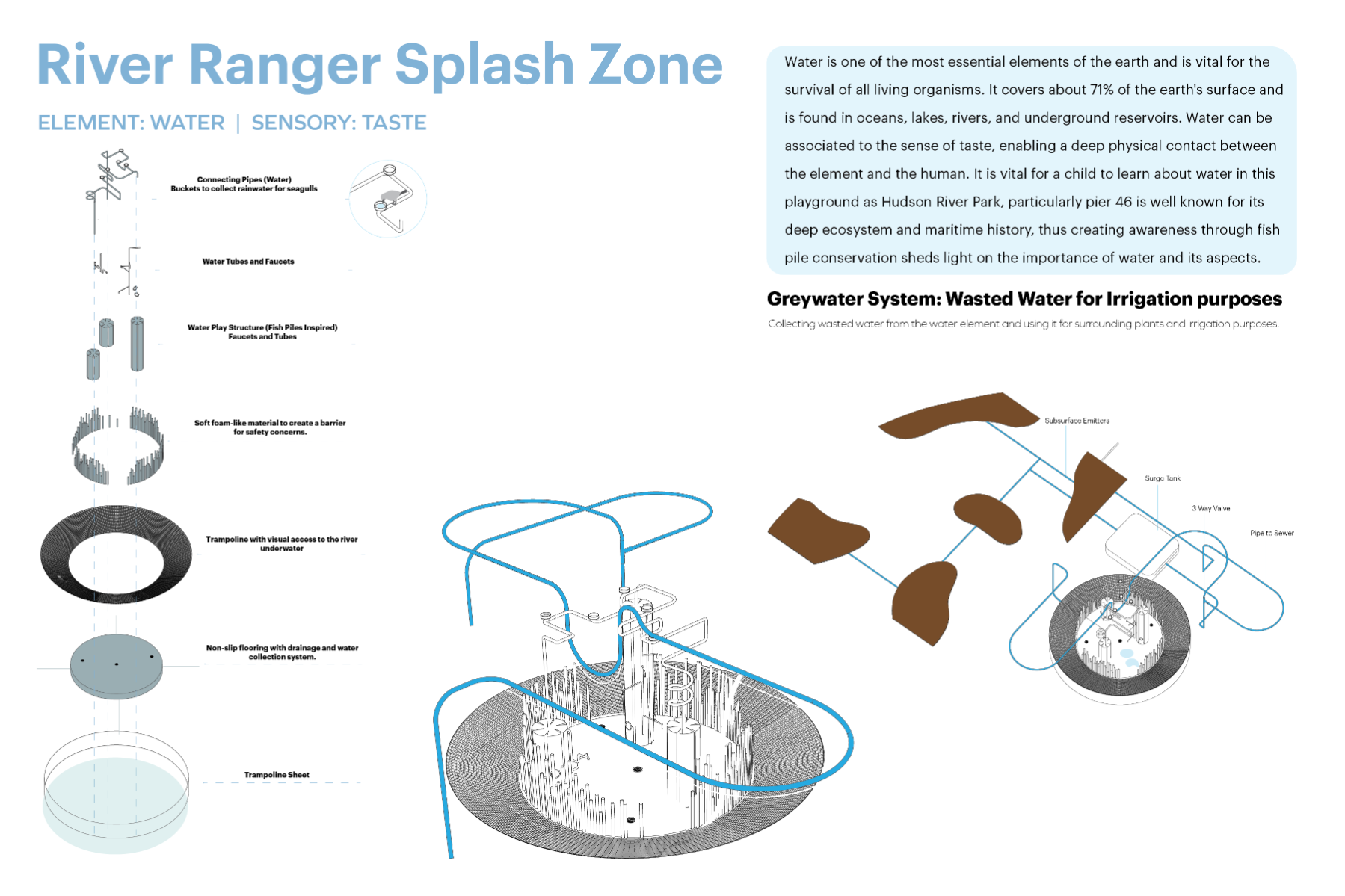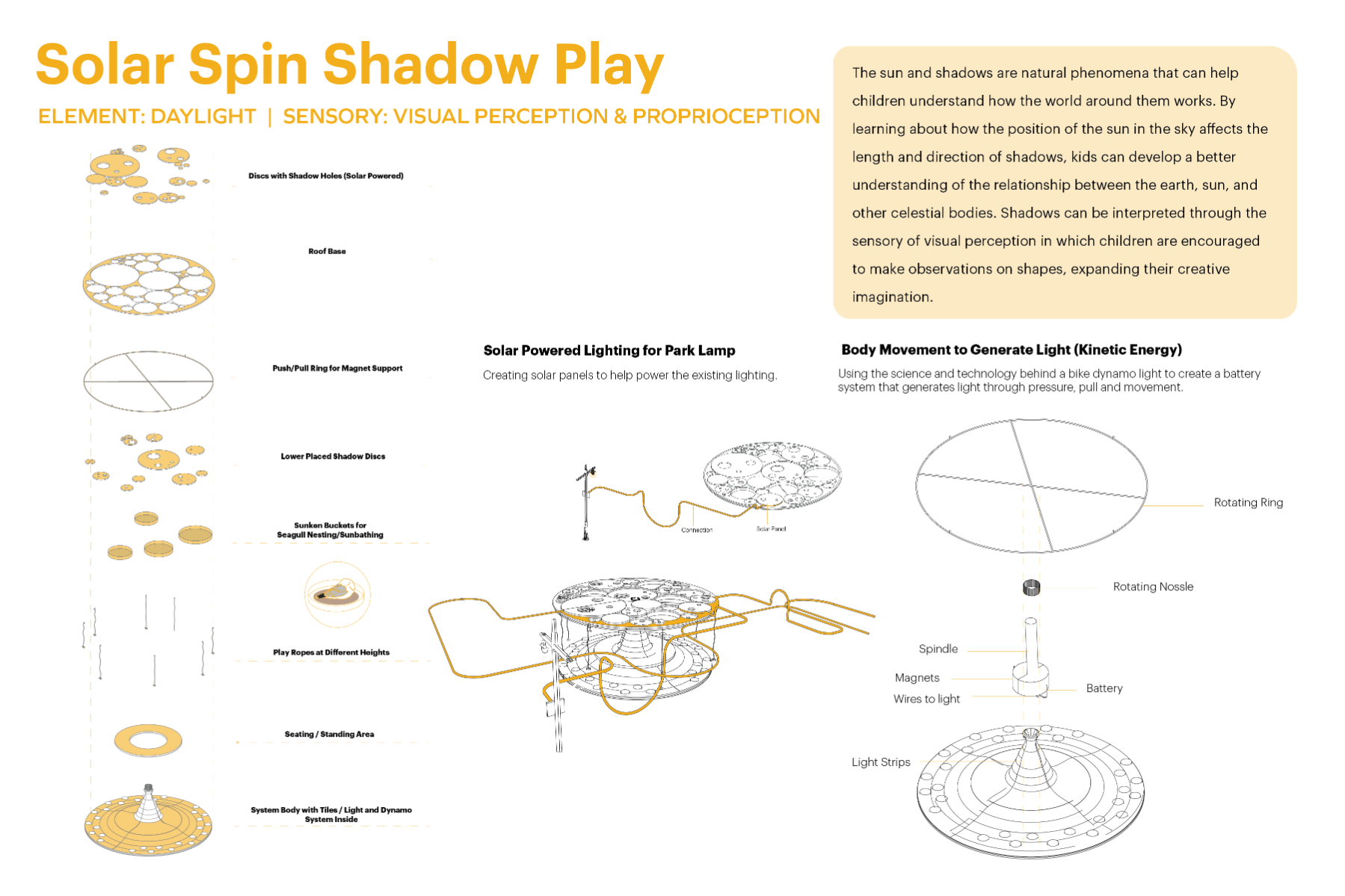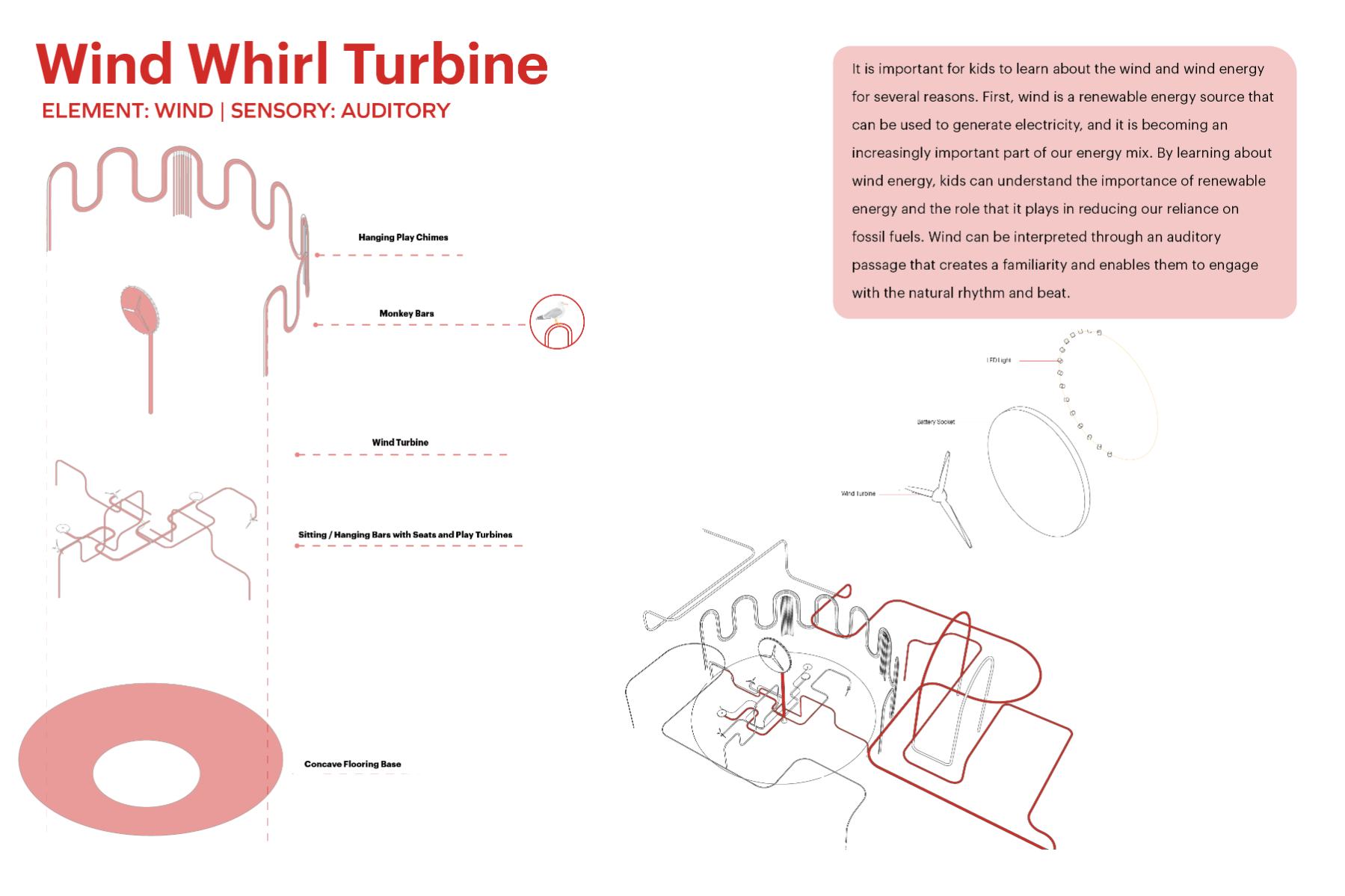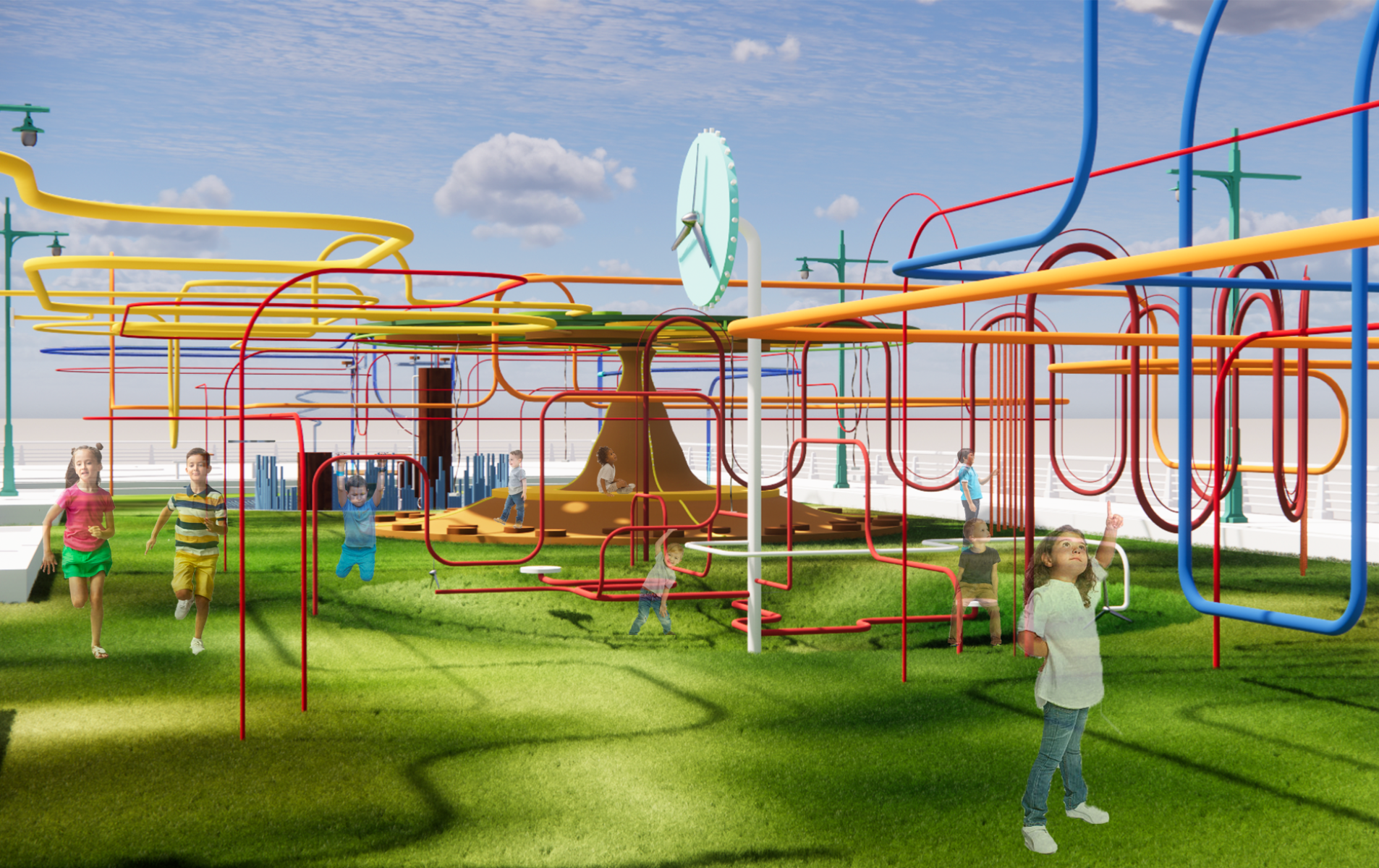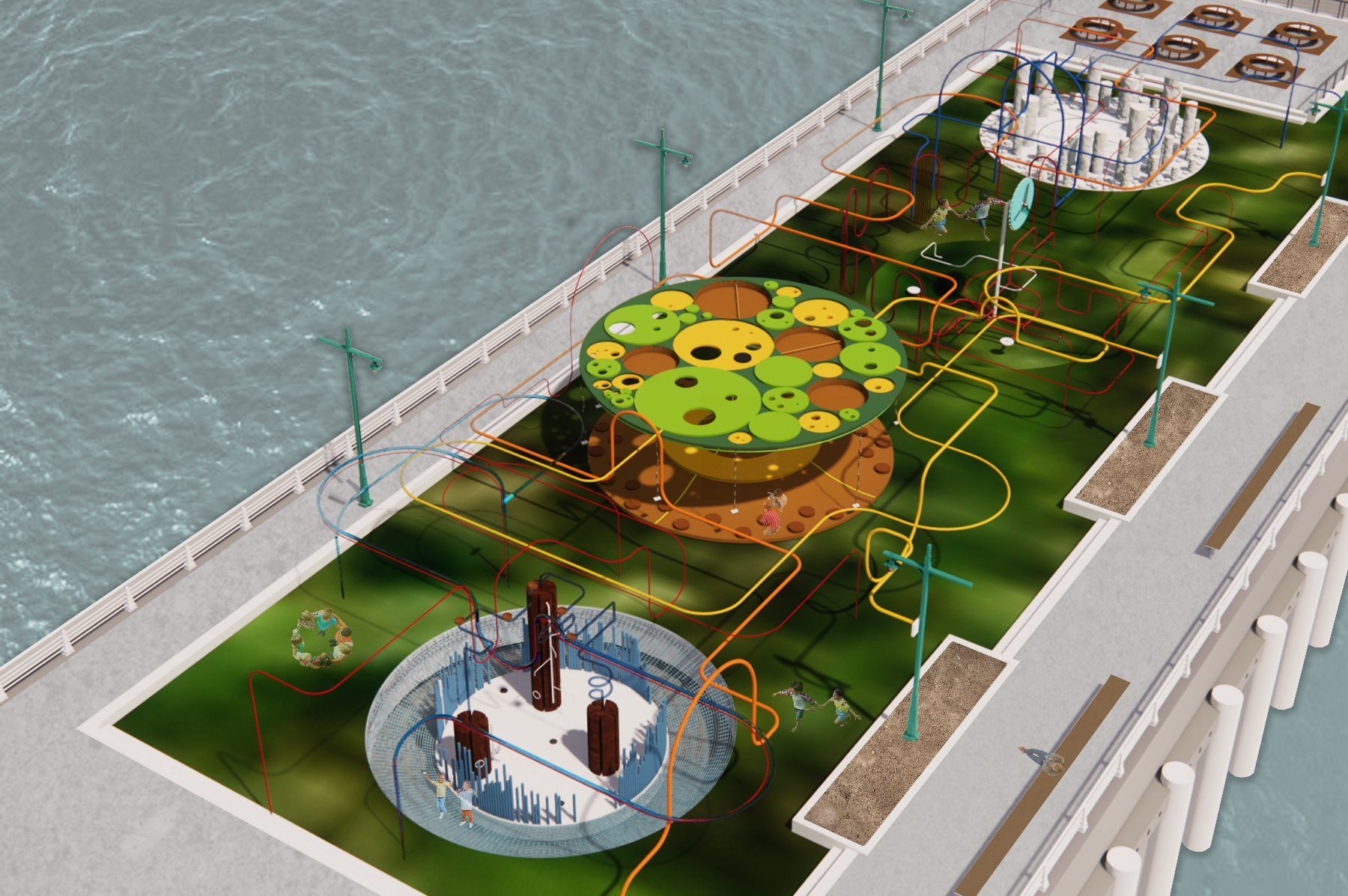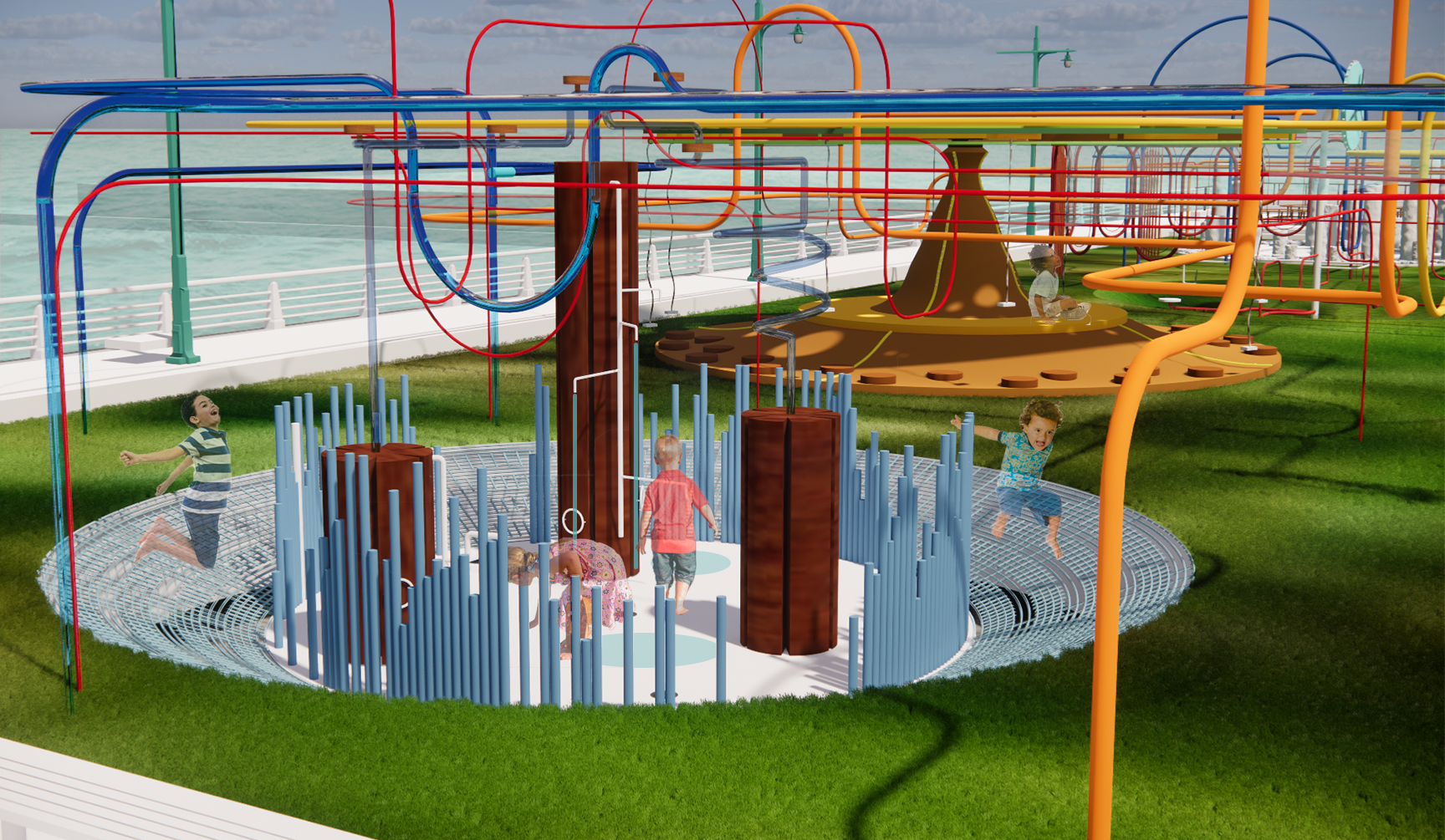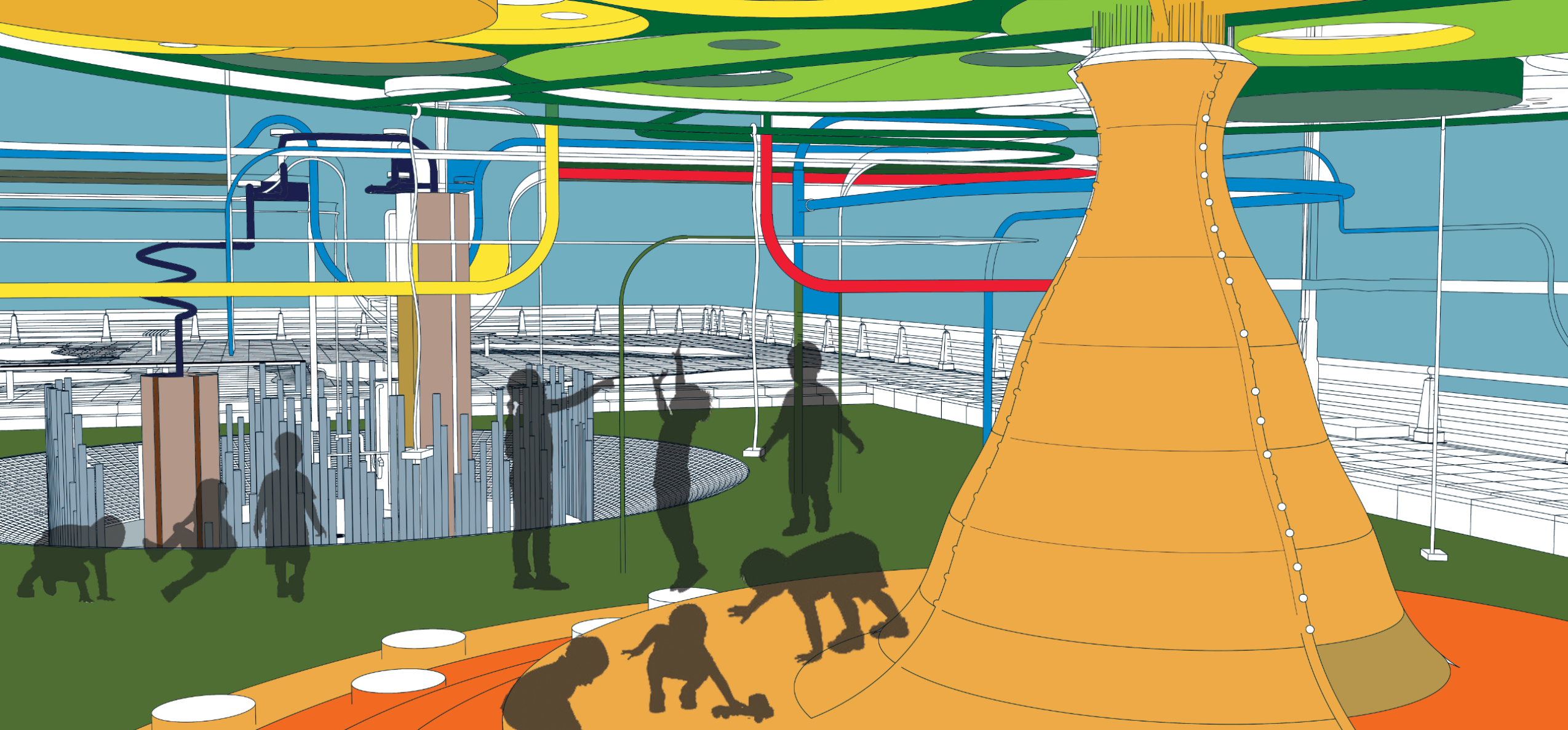Tamanna Sachdev
Interior Design BFA
Parsons School of Design
Specialisms: Interior Design / Interior Architecture / Graphic Design
Location: New York, United States


Man exists in a symbiotic mutualism in a natural environment. This mutualism is not only limited to basic natural sciences, but spans across social, political and economic instruments. For instance, when a researcher collaborates with a farmer, it increases the chances that they will co-create specimens engineered to withstand climate change. Similarly, when a designer connects with parks and recreations, they can bring a sensory-rich playground that incorporates natural environments through a range of sensory stimulations, promoting kinesthetic learning. These synergistic relationships and mutualisms come full circle when humans realize that they are a part of the spectrum of creation and their actions and reactions create energy that can be harnessed and returned to the cycle. This project highlights the synergetic relationship between man and nature and man’s role as a unit of energy production. Elemental Playscape highlights the benefit of harnessing existing kinetic energy from body movements and actions to ignite another action/power. When children, who are known to be powerhouses of energy figuratively, literally become the source of energy, then a playground can be adapted into a transformer through interactive and educational elements, rooted in design and kinetic energy applications. As children explore the playground and its multi-sensory equipment to engage multiple senses, their actions and reactions produce energy that can be fed back into the same equipment, creating a synergistic mutualism. This mutualism is also grounded in awareness of space and the ecosystems that function within that space. Within these spaces, transiency is observable based on environmental fluctuations and periods of human activity and inactivity. This project establishes a model for synergistic living that strengthens the sense of stewardship over the environment in children through a kinesthetic learning approach.
Competitions

